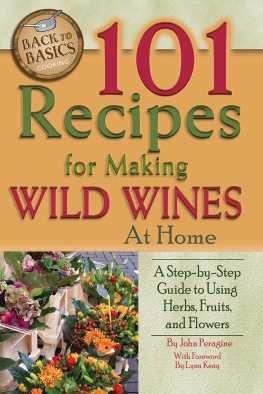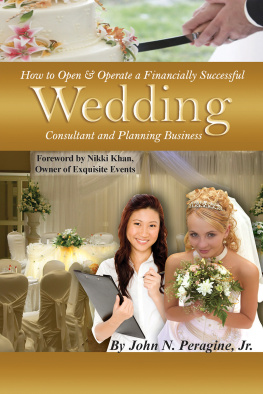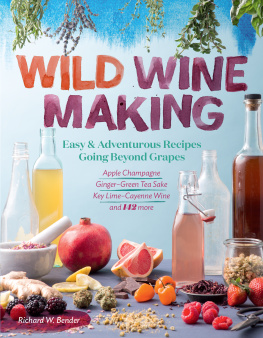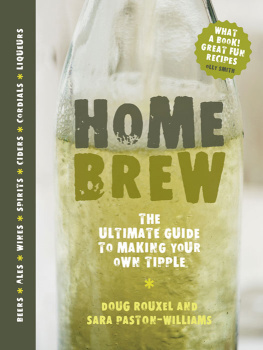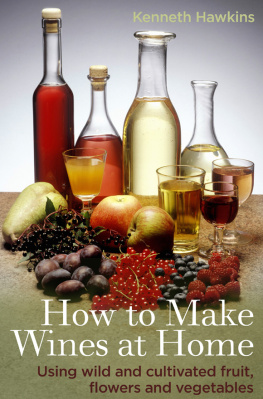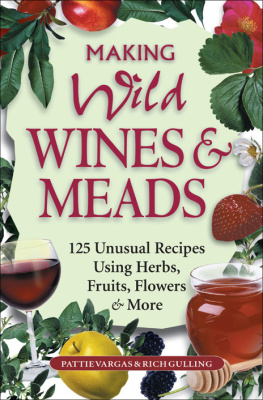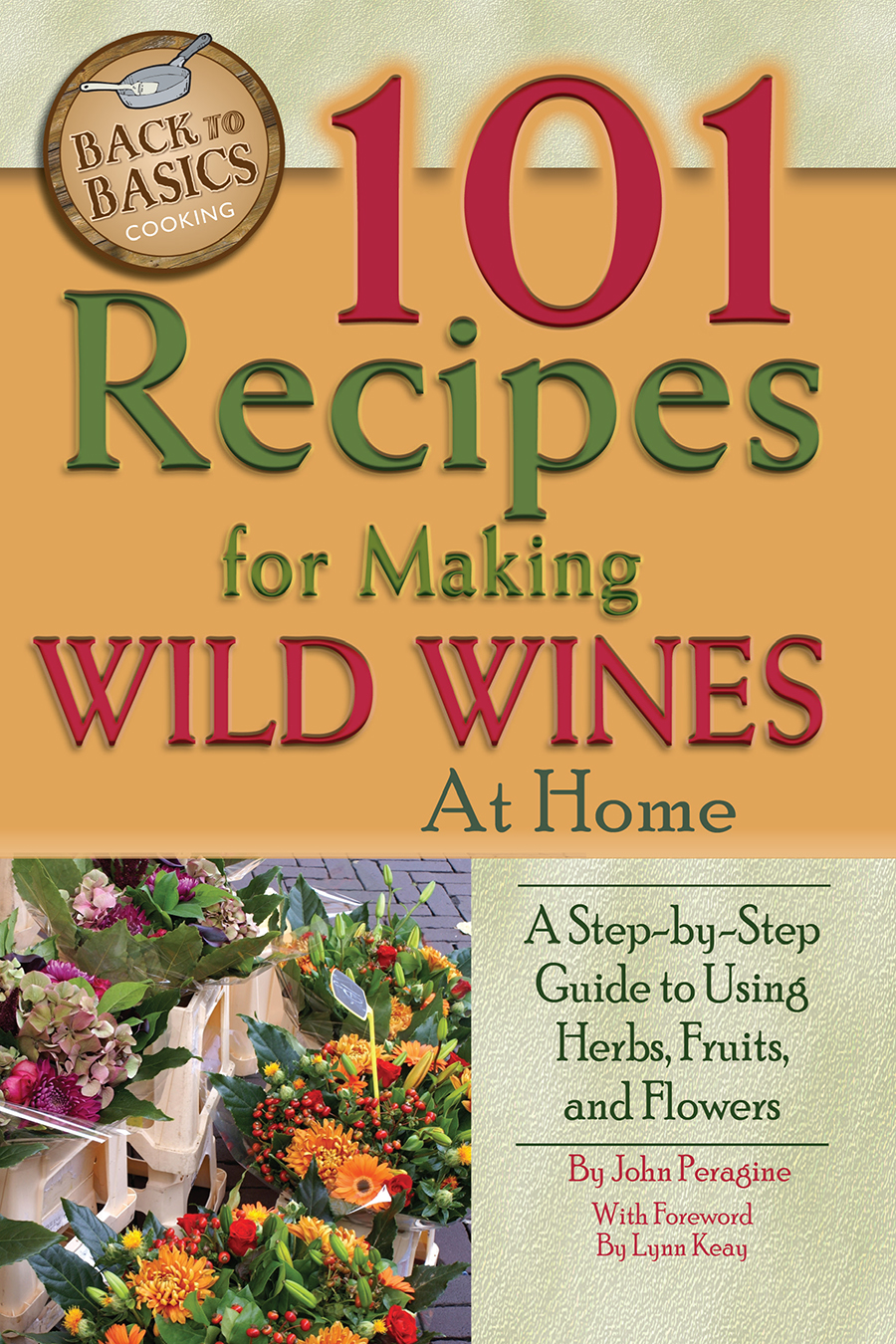101 Recipes for MAKING Wild Wines at Home:
A Step-by-Step Guide to Using Herbs, Fruits, and Flowers
By John N. Peragine Jr.
101 RECIPES FOR MAKING WILD WINES AT HOME: A STEP-BY-STEP GUIDE TO USING HERBS, FRUITS, AND FLOWERS
Copyright 2010 Atlantic Publishing Group, Inc.
1405 SW 6th Avenue Ocala, Florida 34471 Phone 800-814-1132 Fax 352-622-1875
Web site:
SAN Number: 268-1250
No part of this publication may be reproduced, stored in a retrieval system, or transmitted in any form or by any means, electronic, mechanical, photocopying, recording, scanning, or otherwise, except as permitted under Section 107 or 108 of the 1976 United States Copyright Act, without the prior written permission of the Publisher. Requests to the Publisher for permission should be sent to Atlantic Publishing Group, Inc., 1405 SW 6th Avenue, Ocala, Florida 34471.
This publication is protected under the US Copyright Act of 1976 and all other applicable international, federal, state and local laws, and all rights are reserved, including resale rights: you are not allowed to give or sell this ebook to anyone else. If you received this publication from anyone other than an authorized seller you have received a pirated copy. Please contact us via e-mail at and notify us of the situation.
Library of Congress Cataloging-in-Publication Data
Peragine, John N., 1970
101 recipes for wild wines at home : a step-by-step guide to using herbs, fruits, and flowers / John N. Peragine, Jr.
p. cm.
Includes bibliographical references and index.
ISBN-13: 978-1-60138-359-4 (alk. paper)
ISBN-10: 1-60138-359-2 (alk. paper)
1. Wine and wine making--Amateurs manuals. I. Title. II. Title: One hundred one recipes for wild wines at home.
TP548.2.P47 2009
641.872--dc22
2009030830
LIMIT OF LIABILITY/DISCLAIMER OF WARRANTY: The publisher and the author make no representations or warranties with respect to the accuracy or completeness of the contents of this work and specifically disclaim all warranties, including without limitation warranties of fitness for a particular purpose. No warranty may be created or extended by sales or promotional materials. The advice and strategies contained herein may not be suitable for every situation. This work is sold with the understanding that the publisher is not engaged in rendering legal, accounting, or other professional services. If professional assistance is required, the services of a competent professional should be sought. Neither the publisher nor the author shall be liable for damages arising herefrom. The fact that an organization or Web site is referred to in this work as a citation and/or a potential source of further information does not mean that the author or the publisher endorses the information the organization or Web site may provide or recommendations it may make. Further, readers should be aware that Internet Web sites listed in this work may have changed or disappeared between when this work was written and when it is read.
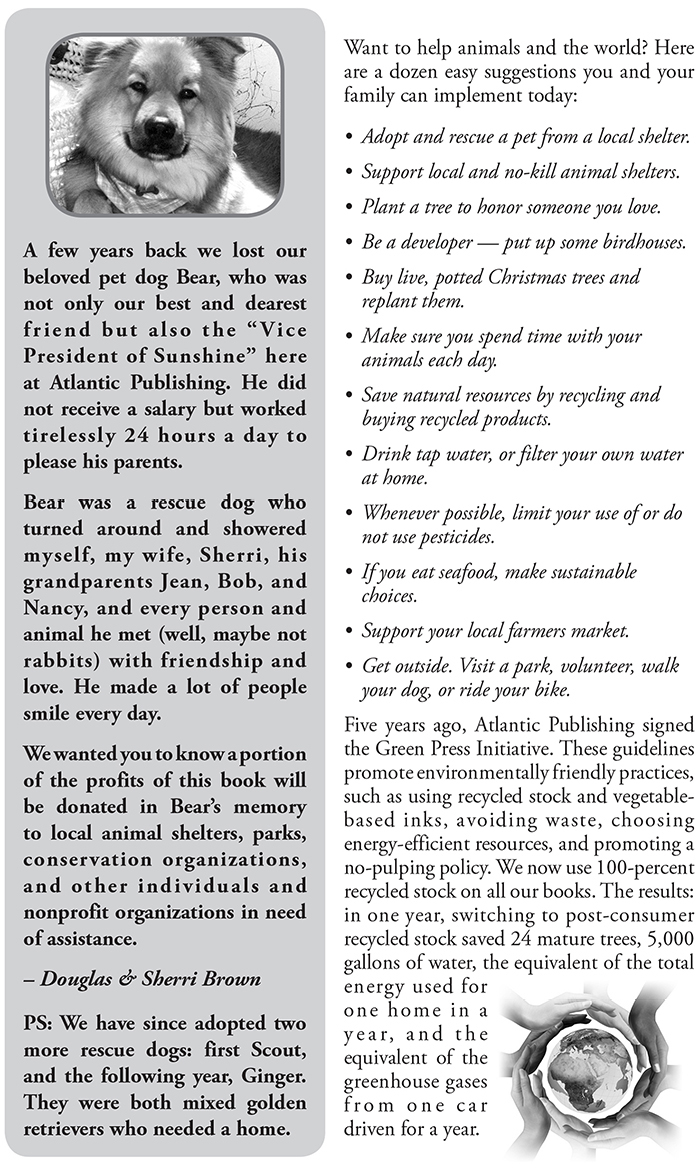
Table of Contents
Dedication
I dedicate this book to the youngest vintages in our family: my great niece Sailor Addison McCall and my niece Ellamina Rose Held.
Foreword
John Peragine encapsulates the essence of basic winemaking in his book 101 Recipes for Making Wild Wines at Home: A Step-by-Step Guide to Using Herbs, Fruits, and Flowers . His simplified style of writing and the contributions of actual input from amateur winemakers creatively bring an age-old art craft into your everyday life. At an average cost of $2/bottle, making your own wine can be achieved without a huge investment.
From the beginning, the book captures the readers intrigue. Peragine winds you steadily through the organic processes and chemistry, holds a walk-through of the basic equipment needs and functions, then leads into an amazingly unique collection of some of the most fabulous wine recipes Ive ever seen. They are made from anything and everything that grows wild or cultivated. Throughout the book, Peragine scatters anecdotal bits of humor and case studies to light the way to the readers imaginations. The mountain of information is logically organized and explained with pictures in a very practical manner. It contains more than enough to get you started if you are simply curious and plenty to take you to the next level if you are completely serious. Naturally, as with any detailed process, there are many variations to the winemaking methods described in the book. But through hands-on experimentation and preferences, all winemakers eventually develop their own unique form of the age-old art, and you will too. Over time, a winemaker figures out what they personally like to drink and what has the best results for their own purposes.
Making wine typically starts as a hobby that offers an endless learning experience for anyone who is challenged to improve the next vintage. Each recipe requires three basic ingredients: sugar, acid, and yeast mixed in the right proportions with water. Then the fun begins, with adding wild ingredients. Anyone can make a wine that is quite drinkable for very little cost. At $2/bottle, you have little to lose. Taken seriously or for fun, the hobby of winemaking can develop into a sophisticated business or simply a unique way of creating pleasure and sharing it with friends and family through the ritual celebration of life. From the first batch, you will be hooked!
Cheers to a happy life with wine,
Lynn Keay
Introduction to Winemaking
One Sunday morning, I received a phone call from a friend who asked me to come over for breakfast. At the time I was a poor college student, so the idea of a free home cooked meal was too good to pass up. When I arrived a formidable stack of pancakes and a wine glass full of a yellow sparkling liquid greeted me.
I asked my friend what the drink was and he said it was his newest batch of mead. I had never heard of mead, but he assured me that I would not go blind drinking it. I checked my watch and determined it had to be 5 oclock somewhere and tried it. It was sweet with a hint of citrus. I was immediately struck by how drinkable and delicious it was.
As I inhaled my pancakes and filled my glass from the green unlabelled bottle, I asked him how he made it. Once he described to me the simple process, I was hooked. I began creating wine right away using nothing more than a bucket, yeast, and a couple of cans of frozen Welchs Grape Juice Concentrate. I cannot say that it was the best-tasting stuff in the world, but the fact that I was able to transform grape juice into wine created an obsession within me.
I bought basic winemaking equipment and a wine book, and got to work. That was 18 years ago, and my house and garage are full of wine, empty wine bottles, and equipment. My wife has been tolerant because she loves the new wines I create for her to try. Every Christmas, I always have the perfect gifts to give to family and friends.

